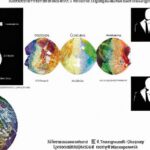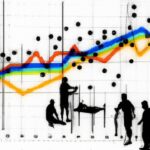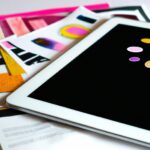Bias and sampling error can affect the accuracy of research findings. Bias occurs when the data collection process is flawed, leading to incorrect results. Sampling error, on the other hand, arises from using a sample that does not accurately represent the population. Both can lead to misleading conclusions and impact decision-making. It’s crucial to understand these concepts to evaluate the reliability of research studies. Researchers must strive to minimize bias and sampling error to ensure the validity of their findings. By being aware of these factors and implementing proper methodologies, researchers can enhance the quality and credibility of their research outcomes.
Table of Contents
(Sampling Errors and Bias)
Bias and sampling error are common issues in research. Bias occurs when the sample is not representative of the target population. It can lead to inaccurate results and wrong conclusions. Sampling error, on the other hand, is the difference between a sample statistic and the true population parameter. It is caused by random variation in the sample selection process. Both bias and sampling error can significantly impact the validity and reliability of research findings. Researchers must be aware of these issues and take steps to minimize their effects. Strategies such as random sampling, control groups, and blinding can help reduce bias and sampling error. By being mindful of these issues and employing appropriate methodologies, researchers can enhance the quality and credibility of their research outcomes. Addressing bias and sampling error is crucial for producing accurate and meaningful research results that can be trusted and relied upon by the scientific community.
Causes of bias
Bias, a pervasive issue in research, can stem from various sources. Understanding the causes of bias is crucial for researchers to mitigate its impact on their study’s validity and reliability.
One common cause of bias is sampling error. When researchers gather data from a sample that does not accurately represent the entire population, it introduces bias into their findings. Imagine trying to estimate the average height of all students in a school by only measuring basketball players; your results would be skewed towards taller heights due to this biased sample selection.
Another significant factor contributing to bias is researcher bias. Researchers may unconsciously influence the outcomes of their study through preconceived notions or expectations. For instance, if a scientist believes a certain treatment will be effective, they might subconsciously interpret data in a way that supports their hypothesis while overlooking contradictory evidence.
Moreover, funding source bias plays a role in shaping research outcomes. Studies funded by organizations with vested interests in specific results may unknowingly manipulate data or design studies favoring those interests. This scenario could lead to biased conclusions or recommendations that align more with financial goals than scientific integrity.
Publication bias also taints research findings as journals tend to favor publishing positive results over negative ones. Consequently, studies showing no significant effects or inconclusive findings often go unpublished, creating an incomplete representation of existing knowledge and potentially skewing overall scientific understanding.
Furthermore, societal biases rooted in culture and norms can infiltrate research practices without conscious awareness. These biases affect everything from participant recruitment and study design to result interpretations—impacting how research questions are framed and answered based on prevailing beliefs rather than objective analysis.
In essence, recognizing these multifaceted causes of bias allows researchers to implement strategies like randomization techniques during sampling, blind methodologies during data collection and analysis processes – ultimately fostering more rigorous and unbiased scientific inquiry essential for advancing knowledge authentically.
Definition of bias
Bias, in the realm of research and statistics, is like a sneaky intruder that can distort the truth we seek to uncover. It’s this sly force that skews our results, leading us down a twisted path away from objectivity.
Imagine you’re trying to measure how many people love chocolate ice cream. You set up your survey at an ice cream parlor on a scorching summer day – biased much? The bias here lies in the setting; those surveyed are more likely to be ice cream enthusiasts due to their current location and mood.
But bias isn’t just about where you conduct your research; it can also creep in through who you choose to include. If you only ask your friends about their favorite ice cream flavors, you might end up with a strongly biased sample that doesn’t reflect the wider population’s preferences.
Moreover, biases aren’t always intentional – they can sneak into studies even when researchers have the best intentions. Confirmation bias is a cunning one; it makes us interpret information in ways that confirm our preconceptions while ignoring contradictory evidence.
Picture yourself analyzing data on climate change but leaning towards results supporting what you already believe rather than objectively considering all findings equally. That’s confirmation bias whispering sweet affirmations instead of hard truths in our ears.
Another tricky character is selection bias – imagine studying exercise habits by only focusing on gym-goers without considering couch potatoes or outdoor enthusiasts! Your conclusions could be way off because certain groups were left out of the picture entirely.
In essence, biases are like colorful lenses tinting how we see reality – sometimes subtly shifting shades towards what we want to see rather than reflecting raw truth back at us. Being aware of these invisible influences allows us to adjust our methods and interpretations for clearer insights free from distortion’s deceptive allure.
Impact of bias on research
Bias in research can be like a silent infiltrator, sneaking into the process and tainting results without us even knowing it’s happening. It’s this unseen force that distorts the very essence of what we’re trying to uncover through our studies. Imagine setting out on a quest for truth only to have your path littered with obstacles designed to mislead you at every turn.
When bias creeps into research, it can wear many disguises. Maybe it comes in the form of researchers unwittingly favoring data that confirms their preconceived notions, or perhaps they overlook crucial details that don’t align with their hypotheses. This subconscious manipulation of information can warp findings beyond recognition.
The impact of bias on research is profound and far-reaching. Think about how skewed results can lead us down false paths, wasting precious time and resources chasing ghosts conjured by our own minds. Picture the frustration when we realize too late that our conclusions were built on shaky ground, crumbling beneath the weight of hidden agendas.
Moreover, biases not only affect individual studies but also have broader implications for society as a whole. When flawed research informs policies or shapes public opinion, the consequences ripple outward like cracks spreading across glass – fragile truths shattered by inherent prejudices.
Consider too how bias undermines the credibility of science itself. If we cannot trust in the objectivity and integrity of research findings, then what foundation do we have left to stand upon? Doubt seeps in like water through a crack, eroding faith in knowledge and sowing seeds of skepticism where certainty once bloomed.
In combating bias, awareness is our greatest weapon. By shining a light on these shadowy inclinations within ourselves and within our scientific community, we take the first step towards reclaiming truth from distortion. It requires humility to acknowledge our vulnerabilities and diligence to rigorously scrutinize every facet of our work for signs of prejudice.
Ultimately, confronting bias in research demands courage – the courage to confront uncomfortable truths, revise deeply held beliefs if necessary, and commit ourselves anew to upholding the principles of objectivity and intellectual honesty essential for advancing understanding in an ever-complex world.”
(Sampling Bias vs Sampling Error with Examples)
Strategies to minimize bias
When delving into the realm of bias and sampling error, one crucial aspect to consider is strategies to minimize bias. Bias can sneakily distort results, leading us astray from reality. So, how do we combat this sneaky foe? Let’s dive in!
Firstly, diversifying your sample is key! Imagine you’re baking a cake – if you only use flour without sugar or eggs, it won’t turn out right. Similarly, a sample that lacks diversity will skew results. Including various demographics ensures a more accurate representation.
Next up on our anti-bias journey is randomization! Picture yourself at an ice cream shop with myriad flavors. If you always choose vanilla first, are you truly experiencing all the options? Randomizing helps prevent systematic errors by introducing unpredictability into data collection.
Moreover, blinding techniques can shield against biases creeping in unknowingly. It’s like playing hide-and-seek with biases; if they can’t see where to latch onto your study design, they’ll have a tougher time influencing outcomes.
Another powerful weapon in our arsenal is transparency! Think of it as shining a light on every nook and cranny so biases can’t hide in the shadows. By openly sharing methodologies and potential conflicts of interest, we boost credibility and trustworthiness while reducing room for biased interpretations.
Additionally, employing validated measurement tools acts as a sturdy shield against bias attacks. These tools are like trustworthy companions guiding us through uncharted territories; their reliability enhances the accuracy and validity of our findings.
Lastly but certainly not least – awareness! Being mindful of our own beliefs and preconceptions allows us to navigate around them skillfully. It’s akin to wearing special glasses that help us see more clearly through the fog of bias lurking around every corner.
In conclusion, minimizing bias requires a multi-faceted approach akin to preparing for battle against unseen foes. By embracing diverse samples, incorporating randomness into processes, utilizing blinding techniques and validated tools while maintaining transparency and self-awareness – we fortify ourselves against biases’ sly advances significantly.
Types of bias
In the realm of research and data analysis, biases are like sneaky little gremlins that can skew results faster than you can say “wait, what?!” Let’s delve into the fascinating world of bias types.
First up, we have confirmation bias – it’s a sly one. This type of bias occurs when researchers cherry-pick data that supports their preconceived notions while conveniently ignoring anything that contradicts their beliefs. It’s like wearing blinders in a race; you only see what you want to see.
Then there’s selection bias, which is akin to inviting only your friends to a party but excluding all others. In research terms, this happens when certain members of a population are more likely to be included in a study than others. The result? A skewed representation that doesn’t reflect the entire group accurately.
Let’s not forget about observer bias – it’s like having colored glasses on while watching an art show. This type of bias creeps in when researchers inadvertently influence participants or observations due to their own expectations or beliefs. It’s hard not to let personal opinions seep into our work sometimes!
Moving on to recall bias – oh boy, this one plays tricks with memory! Imagine trying to recount your favorite childhood memory after years have passed; details might get fuzzy or exaggerated over time. Similarly, in research, participants may unintentionally distort past events based on current knowledge or feelings.
Lastly (but certainly not least), social desirability bias likes to put on a mask during surveys and interviews—it’s all about painting oneself in the best light possible because who wants strangers judging them negatively? Participants may provide answers they think are socially acceptable rather than honest responses.
Navigating through these biases can feel like tiptoeing through a minefield—tricky yet essential for producing reliable and accurate results.
So next time you’re knee-deep in data analysis mode, keep an eye out for those mischievous biases lurking around every corner—they might just surprise you if left unchecked!













